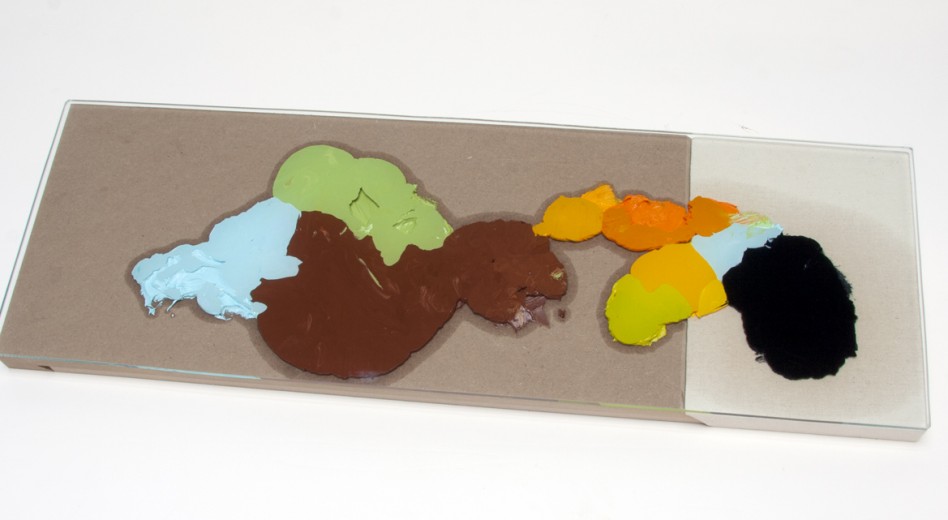
About
About my work in general:
Recently I’ve been revisiting old strategies of drawing and visual collages on paper, rooted in abstracted still lives and landscapes. I begin the circuit by doing drawing in various modes based on sculptures and existing paintings. I remix, collage and lean into color and form. The next step in the circuit will be making sculptures and paintings based on the drawings, and around and around.
For the bulk of my practice I’ve made work that aesthetically explores craft at the intersection of painting, sculpture, and installation. At its core, this work mines, camouflages and highlights, themes of queer identity, truth, rage, and personal narrative. The use of color and material exploration are the central axes that these explorations revolve around.
Occasionally, I also make thematic bodies of work that more deeply delve into specific ideas in particular. The writing below speaks about the last example of that type of exploration that I went on, beginning in 2017:
After the social and psychic shock of the last few years, I decided to embark on a new body of work, straying from the rigorously formalist practice I’ve pursued over the last decade. This new work, while sharing an aesthetic sense with it’s progenitors, is more obvious in it’s addressing of content and more loaded and coded with my personal experience.
The first iteration of this work, resulting in the exhibition Time Won’t Give Me Time, is explicitly personal, reflecting my experience of growing up as a gay kid in the mid 1980’s. In particular, the work examines the deep cultural ambivalences and contradictions vis-à-vis queer people and culture characterized by the era’s broader climate. On the one hand, the work recalls a new sense of possibility for gay youth of the period, who grew up with a novel sense of a broader gay community, as well as exposure to non-heteronormative cultural icons like Boy George and Madonna, who celebrated the joyful creativity of gay club culture and ruled the pop music and music video landscapes. On the other hand, the era also witnessed the AIDS epidemic’s breakthrough into national consciousness, and the trauma of forming ones sexual identity while witnessing images of emaciated men in the final stages of AIDS, both pitied and reviled on Oprah, is strongly present within these works as well.
Joy, fear, rage and sadness.
I am attempting in the work to dive into this tense juncture between pain and possibility, examining it through the lenses of personal memory and the art and culture of the time. Works on paper, sculptures, and paintings pull inspiration from my family photos, popular culture, gay porn, and the lives and careers of openly gay artists of the time such as Peter Hujar and David Wojanrowicz, as well as activists of that era and before.
My goal is to walk the line of not being overly sentimental, or to present a showcasing of personal trauma. My experiences were personally mine, but not unique.
(This is an amended and augmented version of a statement written with Elizabeth Wolfson for the exhibition Time Won’t Give Me Time. The ideas in the statement flowed from ongoing conversations between the two of us in the lead up to the show.)
The interview below with Eileen G’Sell chronicals an interesting moment during the formation of this work and resulting exhibition.
http://alivemag.com/renewed-minimalism-a-conversation-with-st-louis-artist-brandon-anschultz/
This is a great interview with Elizabeth Wolfson from 2011 for Art21.